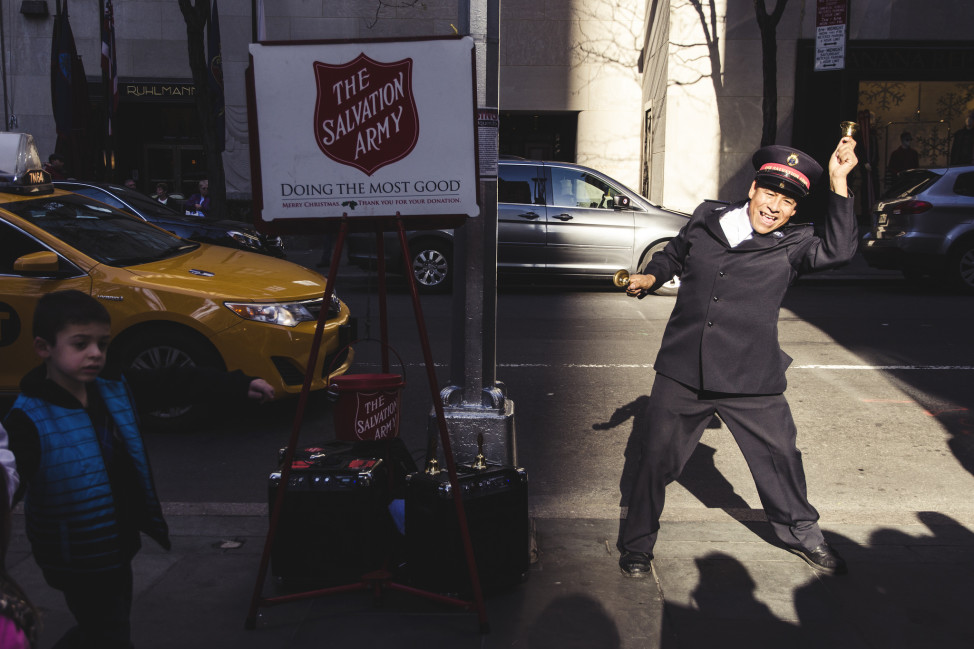
Collecting cash donations in New York City. (Photo by Flickr user Javi Sánchez de la viña under Creative Commons license)
A majority of Americans — two-thirds — gave money to charity in 2014, an estimated $358.38 billion in all, more than ever before, according to Giving USA 2015: The Annual Report on Philanthropy for the Year 2014. That’s a 7.1 percent increase from 2013.
Giving to the less fortunate and to institutions we believe in, is an American ideal that dates back to Colonial times. In the 18th century, charitable giving focused primarily on religion and higher education, and, as the young nation prospered, eventually branched out to health, social causes, and the arts.
2014 US CHARITABLE GIVING
Religion – $114.90 billion
Education – $54.62 billion
Human Services – $42.10 billion
Health – $30.37 billion
Arts/Culture/Humanities – $17.23 billion
Environment/Animals – $10.50 billion
Public/Society Benefit – $26.29 billion
Foundations – $41.62 billion
International Affairs – $15.10 billion
“Giving has been part of our fiber since the beginning of our country,” said Aggie Sweeney, vice chairperson of the Giving USA Foundation. “Americans have always seen giving as an important part of what makes our communities work. In America, we’ve had a belief of taking care of our own and wanting to be able not to only have government take care of things, but to invest in what we feel is really important.”
More than 200 years later, religion and education still receive the biggest pieces of the philanthropy pie. Over the past 60 years, religious organizations received more charitable money than any other institution or cause. Last year, more money was given to religion than in any time in the report’s 60-year history.
However, religion now rakes in a smaller percentage of overall giving, which might be a reflection of diminishing religiosity in the United States.
“There’s been a steady decline over the years,” Sweeney said. “We do know, as we look at 40-year trends, that the proportion of American households that are actively involved in and participating in religious or spiritual communities has declined and we believe that that accounts for much of the difference in giving to religion.”
About $258.51 billion, or 72 percent of the total, was given by individuals. The average cash-only charitable deductions taken on American tax returns in 2012 was $4,449.
Meanwhile, corporations gave $17.77 billion, which is 5 percent of the total money donated. Sweeney says those numbers suggest philanthropic giving is not a significant priority for many U.S. corporations.
“Corporate giving increased a bit, but when we look at it as a percent of pre-tax profits, it dropped,” Sweeney said. “I would love to have corporations feel more of a sense of responsibility and commitment to the communities that helped to make them successful. We just aren’t seeing that.”






















I think that it is rather difficult to make comparisons in the four top categories: Religion, Education, Human Services, and Health. In fact, many people who donate to “religious” causes know that their donation will be used in all these categories. Just to make that concrete: mission groups that are sponsored by various denominations usually work in developing countries. The donors know that the money is actually spent (with a very effective ratio of cost benefits in the remaining three categories). This is true with refugee situations and natural disasters (like the earthquake in Nepal). These religious organizations already have people on the ground anyway, often locals, and so they are able to pass on quite effectively whatever is donated to the recipients. Closer to home (for Americans), at the time of President Bush, there was an awareness of the cost effectiveness of using religious groups to deal with addicts, runaways, etc. These are, I think, important things to keep in mind in such a study.